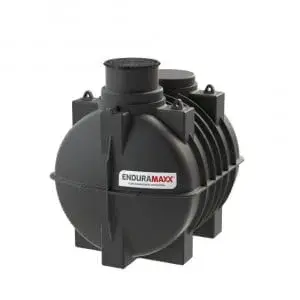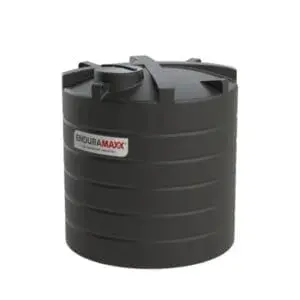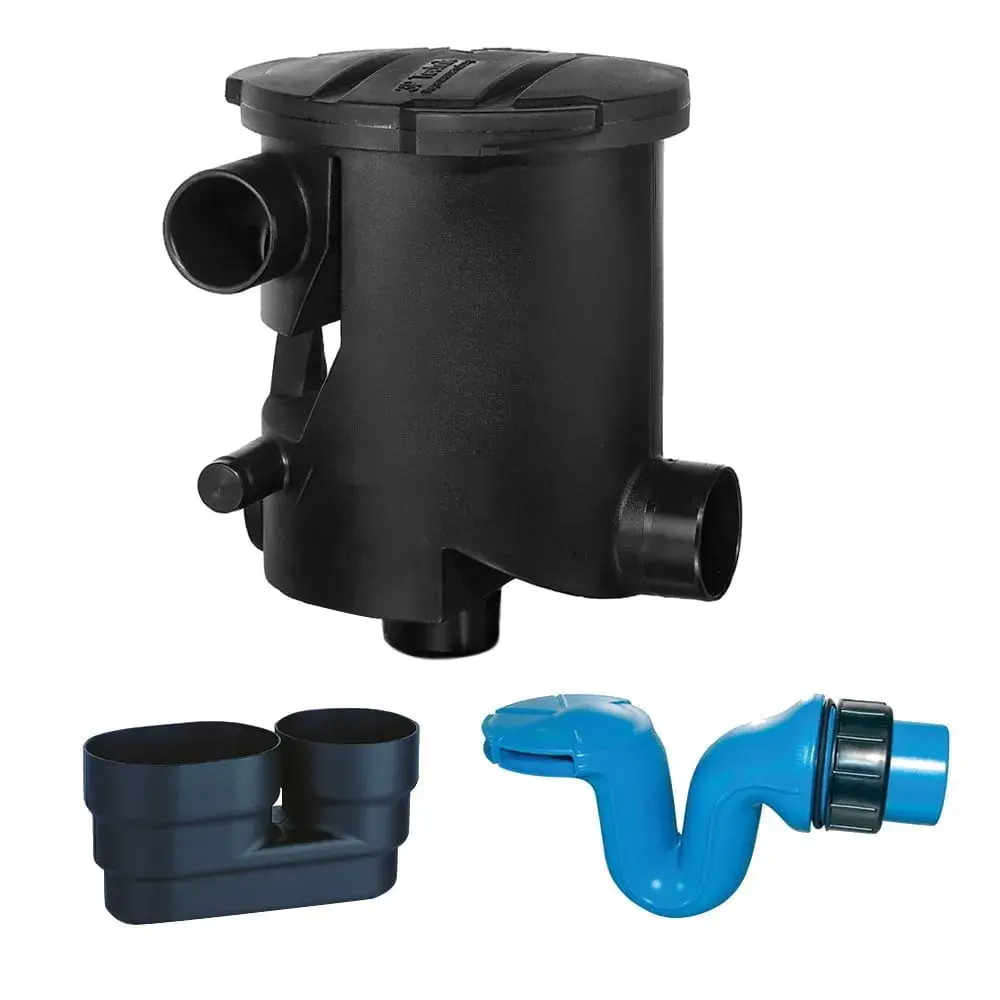Anaerobic Digestion Process Water – anaerobic digestion is suited to organic material and commonly used for industrial effluent, wastewater and sludge treatment. Anaerobic digestion is a simple process and can greatly reduce the amount of organic matter sent to landfill.
Pressure from environmental legislation on solid waste disposal methods has increased the application of anaerobic digestion as a process for reducing waste volumes. It may either be used to process the source-separated waste or alternatively combined with mechanical sorting systems to process residual mixed municipal waste through systems mechanical biological treatment plants. If the waste processed in anaerobic digesters were disposed of in a landfill it would break down naturally and often anaerobically and the gas will eventually escape into the atmosphere. As methane is about 20 times more potent as a greenhouse gas than carbon dioxide this can have significant negative environmental effects. The use of local anaerobic digestion facilities can help to reduce the amount of waste that requires transportation to centralized landfill sites or incineration facilities reduced the burden on transportation carbon emissions from the collection vehicles.
Process Water Treatment
Anaerobic Digestion Process Water or wastewater generally contains contaminants at elevated levels, organic compounds including Ammoniacal Nitrogen that would generally exceed effluent consent limits. This necessitates a road tanker or pre-treatment prior to discharge. The economic viability of pre-treatment is determined on a site-specific test but as a rule, the capital cost of constructing a plant should be recouped within a 2-year timeframe. Aerobic Biodegradation is the most cost-effective form of pre-pre-treatment in which Ammoniacal Nitrogen and organic compounds are oxidised producing effluent that can in many cases comply with trade effluent consent discharge to sewer. Enduramaxx works with several wastes after treatment companies who offer onsite analysis and works with these consultants to build bespoke treatment plants for process wastewater and trade effluent consent limits and environmental legislation targets.
What is Biogas?
Biogas is the ultimate waste product of the bacteria feeding off the input biodegradable feedstock and is mostly methane and carbon dioxide, with a small amount of hydrogen and trace hydrogen sulphide. Most of the biogas is produced during the middle of the digestion, after the bacterial population has grown, and tapers off as the putrescible material is exhausted. The gas is normally stored on top of the digester in an inflatable gas bubble or extracted and stored next to the facility in a gas holder. The methane in biogas can be burned to produce both heat and electricity, usually with a reciprocating engine or microturbine often in a cogeneration arrangement where the electricity and waste heat generated are used to warm the digesters or to heat buildings. Electricity produced by anaerobic digesters is considered to be renewable energy and may attract subsidies.
Biogas may require treatment or ‘scrubbing’ to refine it for use as a fuel. Hydrogen sulphide, a toxic product formed from sulphates in the feedstock, is released as a trace component of the biogas. National environmental enforcement agencies, such as the English and Welsh Environment Agency, put strict limits on the levels of gases containing hydrogen sulphide. Alternatively, the addition of ferrous chloride FeCl2 to the digestion tanks inhibits hydrogen sulphide production.
Acidogenic Anaerobic Digestate
The second by-product (digestate) is a stable, organic material consisting largely of lignin and cellulose, but also of a variety of mineral components in a matrix of dead bacterial cells; some plastic may be present. The solid digestate can also be used as feedstock for ethanol production.
The third by-product is a liquid (methanogenic digestate) rich in nutrients, which can be used as a fertiliser, depending on the quality of the material being digested Levels of potentially toxic elements (PTEs) should be chemically assessed and this will depend upon the quality of the original feedstock. In the case of most clean and source-separated biodegradable waste streams, the levels of PTEs will low. In the case of wastes originating from industry, the levels of PTEs may be higher and will need to be taken into consideration when determining a suitable end-use for the material.
Wastewater From Anaerobic Digestate
The final output from anaerobic digestion systems is water, which originates both from the moisture content of the original waste that was treated, and water produced during the microbial reactions in the digestion systems. This water may be released from the dewatering or may be implicitly separate from the digestate.
The anaerobic digestion process water and wastewater exiting the anaerobic digestion facility will typically have elevated levels of biochemical oxygen demand (BOD) and chemical oxygen demand (COD). These measures of the reactivity of the effluent indicate an ability to pollute. Some of this material is termed ‘hard COD’, meaning it cannot be accessed by the anaerobic bacteria for conversion into biogas. If this effluent were put directly into watercourses, it would negatively affect them by causing eutrophication. As such, further treatment of the wastewater is often required. This treatment will typically be an oxidation stage wherein air is passed through the water in a sequencing batch reactors or reverse osmosis unit.
Enduramaxx manufacture a number of bunded tanks for wastewater treatment. Ferric chloride bulk tanks are one of the main chemicals used in these processes. While ferric chloride offers a versatile, cost-effective solution to water treatment, it does present storage challenges. These bunded tanks options include liquid level sensor assemblies, and fill pipes, fittings and modifications to suit your application. Other fittings include inlets, outlets, PN16 and ANSI flanges, welded sockets and as well as fume proof lids and vents.
Learn more about Ferric Chloride Storage Tanks here
Posts By Topics
- Blog (303)
- Chemical Storage Tanks (118)
- Chemical Dosing Tanks (114)
- Chemical Tanks (114)
- Water Tanks (58)
- Rainwater Harvesting Tanks (43)
- Vertical Rainwater Tanks (31)
- Vertical Storage Tanks (31)
- Cone Bottom Tanks (19)
- Conical Cone Tanks (18)
- Rainwater Harvesting (17)
- Water Bowsers (15)
- Horizontal Tanks (14)
- Potable Water Tanks (13)
- Farming (9)
- Case Studies (8)
- Industrial Storage Tanks (7)
- Liquid Fertilser Storage Tanks (6)
- WRAS Approved Potable Tanks (6)
- Wine and Beer Production (6)
- Horizontal Transport Tanks (5)
- Microbrewery (5)
- Rainwater (5)
- Category 5 Break Tanks (4)
- Cider Production (4)
- Mixer Tanks (4)
- Molasses Tanks (4)
- Polyethylene tanks (4)
- Rainwater Filter Kits (4)
- SPECIALIST & BESPOKE TANKS (4)
- Bunded Tanks (3)
- Slimline Tanks (3)
- WRAS Approved (3)
- Clarification Tanks (2)
- Crosslinked Polymer Tanks (XLPE) (2)
- Fertiliser Tanks (2)
- Sump Tanks (2)
- Tank Installation (2)
- Water Butt (2)
- underground water tanks (2)
- ACCESSORIES & FITTINGS (1)
- ATV & UTV SPRAYING UNITS (1)
- Above Ground Effluent Tanks (1)
- Bespoke Tank Frames (1)
- Category 5 Turret (1)
- Caustic Soda Tanks (1)
- Closed Top Bunded Tanks (1)
- Craft beer (1)
- Effluent Tanks (1)
- Enduramaxx (1)
- Ferric Chloride Tanks (1)
- Fire Safety Regulations (1)
- Fire Sprinkler Water Storage Tanks (1)
- Industrial Water Tank (1)
- Open Top Bunded Tanks (1)
- Open Top Cone Tanks (1)
- Open Top Vertical Tanks (1)
- Polyethylene Potable Water Tanks (1)
- Polyvinylidene Fluoride (PVDF) Tanks (1)
- Polyvinylidene Fluoride Tanks (PVDF) (1)
- Pressure Washers (1)
- Pro Series Spot Sprayers (1)
- RWH (1)
- Sodium Hydroxide Storage Tanks (1)
- Sprayer Fill-up Tanks (1)
- Uncategorised (1)
- liquid fertiliser tank (1)
Sign up to the newsletter
enduramaxx.marketing
Related Posts
Start Microbrewery using Water Storage Tanks & Cone Bottom Tanks
As we’ve previously mentioned, craft brewing is increasing in popularity in ‘leaps and bounds' as...
Tanks for Water, Wastewater & Chemicals - Enduramaxx
Our tanks for water, wastewater & chemicals are rotationally moulded from high-quality polyethene...
Enduramaxx Chemical Core Products Tank Range
Enduramaxx now lists all its core Chemical Tank Range, on our new website including the standard...
Related Products
From £1,080.00 inc. VAT
£900.00 exc. VAT
From £1,344.00 inc. VAT
£1,120.00 exc. VAT
From £768.00 inc. VAT
£640.00 exc. VAT
£480.00 inc. VAT
£400.00 exc. VAT





